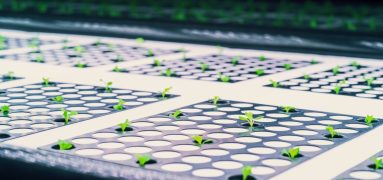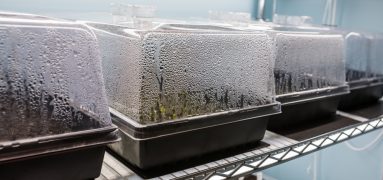Too Humid? Not Humid Enough?

How Humidity Affects Your Greenhouse Grow
When you picture yourself inside of a greenhouse, you probably envision a very humid environment. Relative humidity (RH) is measured on a scale of 1-100% based on the amount of water vapor the air can hold at the current temperature and pressure.
The optimum RH level for a greenhouse is 80%. Of course, the perfect humidity level will vary depending on what type of crop you’re growing—some might like it more humid than others. For example, lettuce and other leafy greens prefer 50-70%, while tomatoes like 60-85%, and strawberries thrive in 60-70%.
But what happens if your humidity levels are too high or too low?
Humidity has a big effect on plants’ transpiration rates. When a plant transpires, it releases water from inside its leaves into the atmosphere. Plants’ ability to release water is important to their function because it allows them to take in more water and nutrients through their roots.
As humidity increases, transpiration decreases. And, conversely, as humidity decreases, transpiration increases.
Too Humid
If your greenhouse is too humid, your plants will reduce their transpiration rate. How does decreased transpiration impact your grow?
When the surrounding environment is too humid, the plants can’t release water from their leaves. And, as a consequence, they can’t take in any more water through their roots. Without this system of releasing and taking in water, the plant will rot. The plant will essentially suffocate on a buildup of water and gases that it cannot exhale through transpiration.
Plus, an environment that is too humid creates the perfect conditions for mold and diseases.
Botrytis, or gray mold, is a huge threat to crops. This fungus thrives in humid environments, and causes fruits and leaves to rot.
Powdery mildews are another threat that comes with excess humidity. Like botrytis, powdery mildews spread fast and cause your crop to rot.
Not Humid Enough
If your greenhouse is too dry, your plants will increase their transpiration rate. When transpiration rates increase, the plants dehydrate and wilt. With a high rate of transpiration, the plants lose water and the essential nutrients that come with it.
And unless you’re growing cactus, most plants don’t like dry environments anyway, so a greenhouse with low humidity isn’t going to do your yield any favors.
Other Issues Impacted by Humidity
Wilting, dehydration, rotting, and fungi aren’t the only issues caused by incorrect humidity levels. Another factor to consider? Pollination.
When the air is too humid, pollen sticks together and is harder to transport from plant to plant.
When the air isn’t humid enough, flowers may have a harder time receiving the pollen, as their stigma can dry out.
VPD
Measuring vapor pressure deficit (VPD) is the best way to monitor the humidity of your greenhouse and track your plants’ transpiration rates. This is because VPD takes temperature into account to determine the difference between how much moisture is currently in the air versus how much moisture the air can hold in total. The point at which the air is completely saturated with water is the dew point.
One thing that is applicable across all crops: you don’t want the humidity to meet the dew point. You want to avoid growing at the dew point because doing so will cause water to condensate on your crops’ leaves, which will lead to mold and rot.
Controlling Humidity
Humidity control within a greenhouse can be pretty complicated. Luckily, we’re here to help.
Temperature and humidity sensors can help monitor humidity levels. We recommend installing an aspirated sensor from the ceiling of your greenhouse.
Other methods of regulating the humidity in your greenhouse include paying careful attention to how you water your crops. Additionally, the temperature and air movement within your greenhouse has a big impact on humidity levels.
TC Control Group can design and install a system that monitors and controls temperature, irrigation, and airflow—and, as a result, creates the optimal humidity for your crops. With a fully integrated TC Control Group system, you can expect a consistently high-quality yield.
Contact our experts to get started on creating a perfectly humid environment for your crops.



